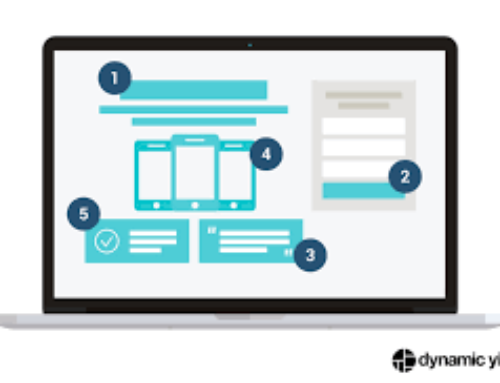Email marketing remains one of the most effective digital marketing strategies for businesses of all sizes. With a direct line to potential customers, well-crafted email campaigns can drive engagement, foster customer loyalty, and generate significant revenue. This blog will explore effective email marketing campaigns, outlining strategies, best practices, and tips for maximizing impact while maintaining a balance between active and passive voice.
Understanding Email Marketing
Email marketing is the process of sending targeted messages to a group of recipients via email. It serves various purposes, including promoting products, sharing updates, and nurturing leads. Despite the rise of social media and other digital marketing channels, email remains a powerful tool for reaching audiences directly.
The Importance of Email Marketing
The effectiveness of email marketing lies in its ability to provide personalized communication. Studies show that for every $1 spent on email marketing, businesses can expect an average return of $42. With this impressive ROI, businesses cannot overlook the potential benefits of effective email marketing campaigns.
Building an Email List
An essential step in email marketing is building a high-quality email list. This list should consist of individuals who have opted to receive communications from your brand. Building an engaged audience is crucial, as it ensures that your messages reach individuals genuinely interested in your products or services.
Crafting Effective Email Marketing Campaigns
Creating successful email marketing campaigns involves strategic planning and execution. Each campaign should have a clear goal and resonate with your target audience. Below are key components to consider when crafting your email campaigns.
-
Define Your Goals
Before launching an email campaign, it is vital to establish clear objectives. Goals may include increasing website traffic, promoting a new product, or improving customer retention. Defining these objectives will guide your campaign’s direction and metrics for success.
-
Segment Your Audience
Segmentation involves dividing your email list into smaller groups based on specific criteria, such as demographics, purchase history, or engagement level. Tailoring your messages to different segments increases relevance, leading to higher open and click-through rates.
-
Craft Compelling Subject Lines
Subject lines serve as the first impression of your email and significantly influence open rates. A compelling subject line should be concise, engaging, and relevant to the content of the email. Incorporating personalization, such as the recipient’s name, can also enhance the likelihood of opening the email.
-
Create Valuable Content
The content of your email should provide value to the reader. This could include informative articles, exclusive offers, or helpful tips. Engaging content not only captures attention but also encourages recipients to take action, whether that’s clicking through to your website or making a purchase.
-
Design for Readability
An aesthetically pleasing and easy-to-read email design enhances user experience. Use a clean layout, clear fonts, and visually appealing images. Ensure that your design is mobile-friendly, as many users check their emails on smartphones and tablets.
-
Incorporate a Clear Call-to-Action (CTA)
A well-defined CTA is crucial for guiding recipients toward desired actions. Whether encouraging them to visit your website, sign up for a webinar, or make a purchase, your CTA should be prominent and actionable. Phrases like “Shop Now,” “Learn More,” or “Get Started” can effectively prompt action.
-
Personalization
Personalization goes beyond using the recipient’s name. Tailoring content based on past interactions, preferences, or behavior can significantly enhance engagement. For example, recommending products based on previous purchases creates a more personalized experience that can lead to increased conversions.
Automating Your Email Marketing Campaigns
Email marketing automation is a powerful tool that can save time while enhancing the effectiveness of your campaigns. Automation allows businesses to send targeted messages based on specific triggers or user behaviors.
-
Welcome Series
A welcome series is an automated set of emails sent to new subscribers. This series introduces your brand, outlines what subscribers can expect, and often includes special offers to encourage first-time purchases. A well-crafted welcome series sets the tone for future communications.
-
Abandoned Cart Emails
Abandoned cart emails are triggered when a customer adds items to their cart but fails to complete the purchase. These automated emails remind customers of their abandoned items, often including incentives such as discounts to encourage them to finalize their purchase.
-
Re-Engagement Campaigns
Re-engagement campaigns target inactive subscribers who have not engaged with your emails for a specified period. These campaigns aim to rekindle interest by offering exclusive content, discounts, or simply asking if they wish to remain on the list.
-
Drip Campaigns
Drip campaigns involve sending a series of automated emails over time, guiding recipients through a specific journey. This technique nurtures leads by providing valuable content, educating them about your products, and gradually encouraging them to make a purchase.
Measuring Email Marketing Campaigns Success
To determine the effectiveness of your email marketing campaigns, it is essential to measure key performance indicators (KPIs). By analyzing these metrics, businesses can refine their strategies for continuous improvement.
-
Open Rate
The open rate measures the percentage of recipients who open your email. A low open rate may indicate issues with subject lines or a lack of engagement. Tracking open rates over time allows you to identify trends and optimize future campaigns.
-
Click-Through Rate (CTR)
The CTR indicates the percentage of recipients who clicked on a link within your email. A high CTR suggests that your content is engaging and that your CTA is effective. Monitoring CTR helps assess the overall performance of your email campaigns.
-
Conversion Rate
The conversion rate measures the percentage of recipients who completed the desired action after clicking through to your website. Tracking this metric is crucial for understanding the impact of your email campaigns on revenue generation.
-
Bounce Rate
The bounce rate indicates the percentage of emails that were not delivered to recipients. A high bounce rate may signal issues with your email list quality. Regularly cleaning your email list and removing inactive or invalid addresses can help improve this metric.
-
Unsubscribe Rate
Monitoring the unsubscribe rate provides insights into how recipients perceive your email campaigns. A high unsubscribe rate may indicate that your content is not resonating with your audience or that you are sending emails too frequently.
Best Practices for Email Marketing Campaigns
Implementing best practices can significantly enhance the effectiveness of your email marketing campaigns. Here are some key strategies to consider:
-
Test and Optimize
A/B testing allows you to experiment with different elements of your emails, such as subject lines, content, and CTAs. By analyzing the results, you can identify which variations resonate best with your audience and optimize future campaigns accordingly.
-
Maintain Compliance
Adhering to email marketing regulations, such as the CAN-SPAM Act and GDPR, is essential. Ensure that recipients have the option to opt-out of communications and that their data is handled responsibly. Compliance fosters trust and enhances your brand’s reputation.
-
Engage with Subscribers
Encouraging two-way communication with your subscribers enhances relationships. Ask for feedback, conduct surveys, or invite recipients to share their thoughts. Engaging with your audience fosters loyalty and can provide valuable insights.
-
Consistency is Key
Establishing a consistent sending schedule helps set expectations with your audience. Whether you choose to send weekly, bi-weekly, or monthly emails, maintaining consistency builds trust and keeps your brand top of mind.
-
Monitor Industry Trends
Staying informed about industry trends and changes in email marketing practices is crucial for success. Continuously learning and adapting your strategies will keep your campaigns relevant and effective.
Conclusion
Email marketing campaigns remain a powerful tool for businesses seeking to connect with their audiences and drive engagement. By understanding the key components of effective email marketing, implementing automation strategies, and measuring success through key performance indicators, businesses can harness the full potential of this channel.
As the digital landscape continues to evolve, staying informed about best practices and industry trends will be essential for maintaining a competitive edge. Embracing these strategies will not only enhance customer relationships but also contribute to long-term business success. By mastering email marketing campaigns, businesses can effectively engage their audiences and achieve their marketing goals
visit our LinkedIn: https://www.linkedin.com/company/digitalsolutiontech/







Leave A Comment